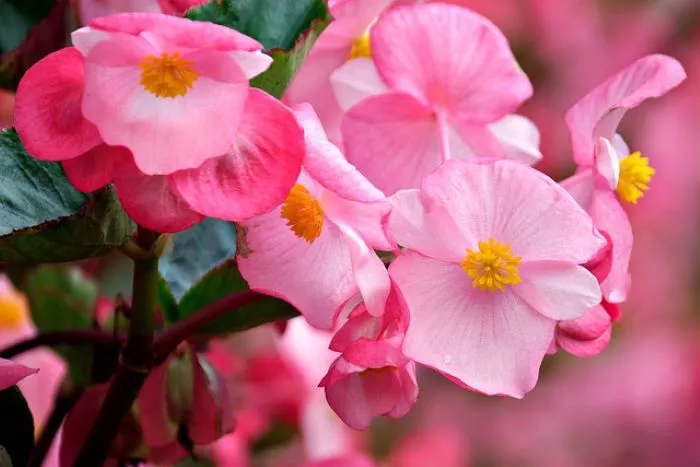Begonias are beloved for their vibrant flowers and attractive foliage. They are popular among gardeners and plant enthusiasts for their beauty and versatility. Understanding how long begonias flower is essential for anyone looking to cultivate these plants successfully. This article explores the flowering duration of begonias, the factors that influence their blooming, and tips for maximizing their flowering potential.
Overview of Begonias
Begonias belong to the family Begoniaceae and consist of over 1,800 species. They are native to tropical and subtropical regions, which influences their growth habits and flowering patterns. Begonias can be classified into different types, including tuberous, fibrous-rooted, and rhizomatous begonias. Each type has its unique characteristics, including flowering habits.
Most begonias are grown for their stunning flowers, which come in various colors, shapes, and sizes. The flowering period can vary significantly depending on the species, the growing conditions, and the care provided.
Typical Flowering Duration
The flowering duration of begonias generally spans several months. Most begonias bloom from late spring to early fall. The exact timing can depend on the specific variety and environmental conditions.
Tuberous begonias are known for their large, showy flowers. They typically begin to bloom in late spring and can continue flowering until the first frost in fall. With proper care, they may produce blooms for about four to six months.
Fibrous-rooted begonias, such as wax begonias, usually flower from early summer until the first frost. Their flowering period can last approximately three to five months. These begonias are often used in garden beds and containers due to their continuous blooming nature.
Rhizomatous begonias, like Rex begonias, are primarily grown for their foliage. While they can produce flowers, their blooming period is generally shorter and less prominent compared to other types. The flowers are often small and may not last as long as those of tuberous or fibrous-rooted begonias.
Factors Influencing Flowering Duration
Several factors can influence how long begonias flower. Understanding these factors can help gardeners maximize the blooming period.
Species and Variety: Different species of begonias have varying flowering durations. Tuberous begonias tend to have longer flowering periods compared to rhizomatous types. Choosing the right variety for your garden can significantly impact the length of the flowering season.
Growing Conditions: The environment in which begonias are grown plays a crucial role in their flowering. Begonias thrive in bright, indirect light. Too much direct sunlight can scorch the leaves and reduce flowering. Conversely, too little light can inhibit blooming altogether.
Temperature: Begonias prefer warm temperatures. Ideal daytime temperatures range from 65°F to 75°F (18°C to 24°C). Nighttime temperatures should not drop below 60°F (15°C). Extreme temperatures can stress the plant and affect its ability to flower.
Watering and Nutrition: Consistent watering is essential for healthy begonias. The soil should be kept moist but not soggy. Overwatering can lead to root rot, while underwatering can cause stress and reduce flowering. Additionally, regular feeding with a balanced fertilizer during the growing season can promote healthy growth and extended blooming.
Pruning and Deadheading: Regular pruning and deadheading can encourage begonias to produce more flowers. Removing spent blooms allows the plant to redirect energy toward new growth and flowering. Pruning also helps maintain the plant’s shape and health.
Tips for Extending the Flowering Period
To maximize the flowering duration of begonias, consider the following tips:
Choose the Right Location: Plant begonias in a location that receives bright, indirect light. Avoid areas with harsh, direct sunlight, which can damage the leaves and reduce flowering.
Monitor Watering: Water begonias consistently, allowing the top inch of soil to dry out between waterings. Ensure that pots have drainage holes to prevent waterlogging.
Provide Nutrients: Feed begonias with a balanced, water-soluble fertilizer every four to six weeks during the growing season. This will support healthy growth and prolong the flowering period.
Control Temperature: Protect begonias from extreme temperature fluctuations. If growing indoors, keep them away from drafts and heating vents. Outdoors, consider bringing containerized begonias inside during cold nights.
Practice Deadheading: Regularly remove spent flowers to encourage the plant to produce new blooms. This simple practice can significantly extend the flowering period.
Conclusion
Begonias are stunning plants that can provide months of vibrant blooms when properly cared for. The flowering duration typically ranges from three to six months, depending on the species and growing conditions. By understanding the factors that influence flowering and implementing effective care practices, gardeners can enjoy the beauty of begonias throughout the growing season. Whether in containers, hanging baskets, or garden beds, begonias are sure to add color and interest to any landscape.


